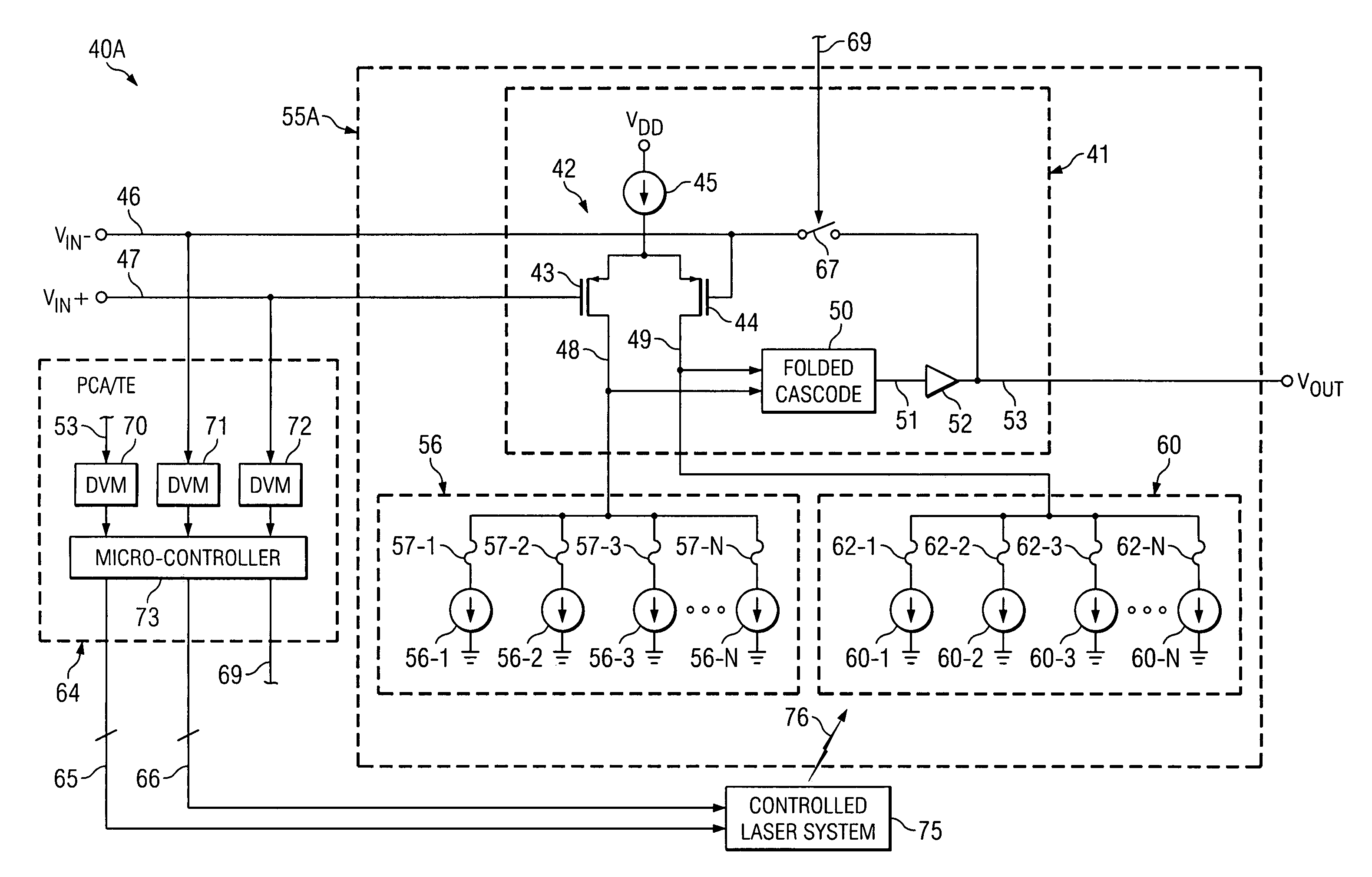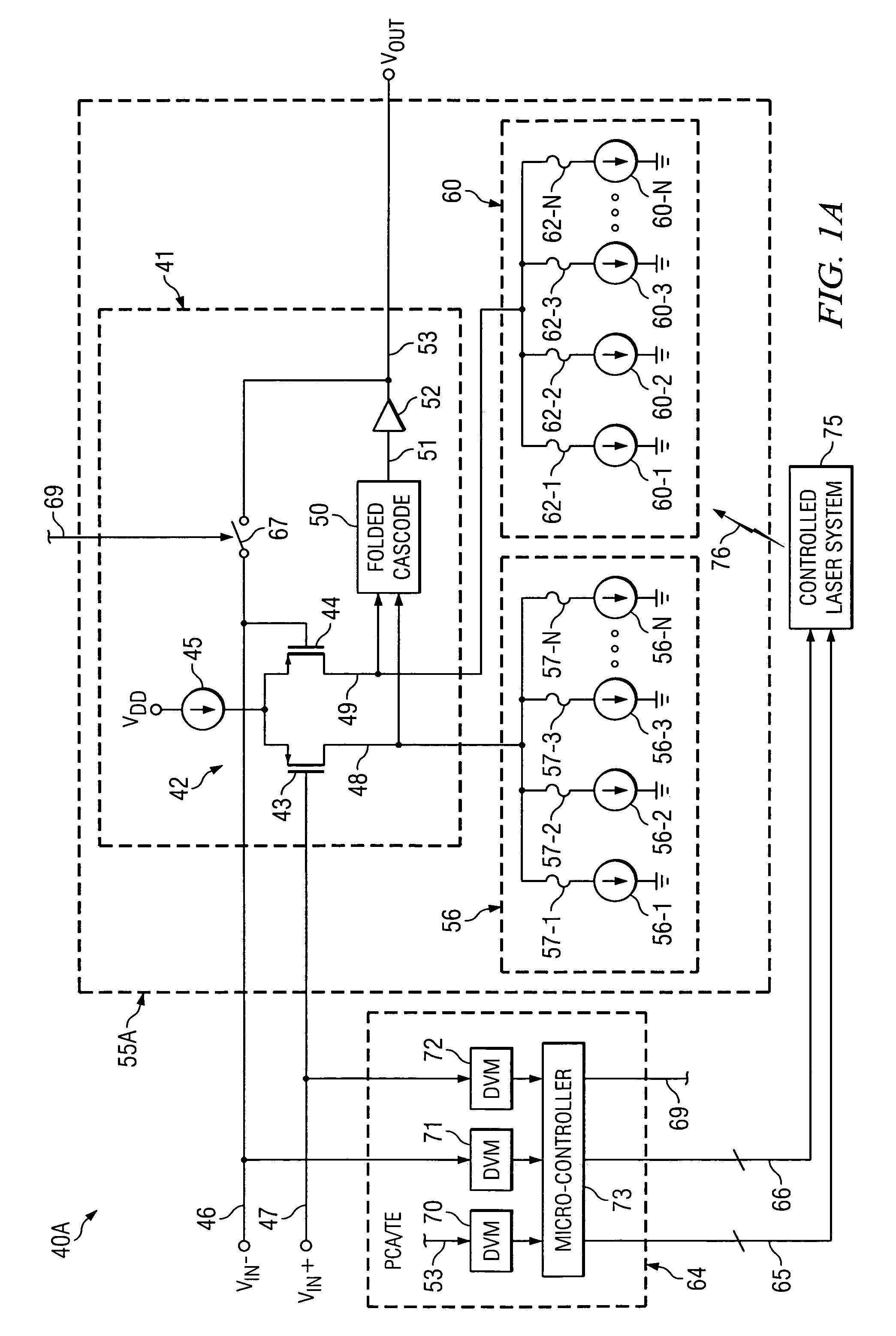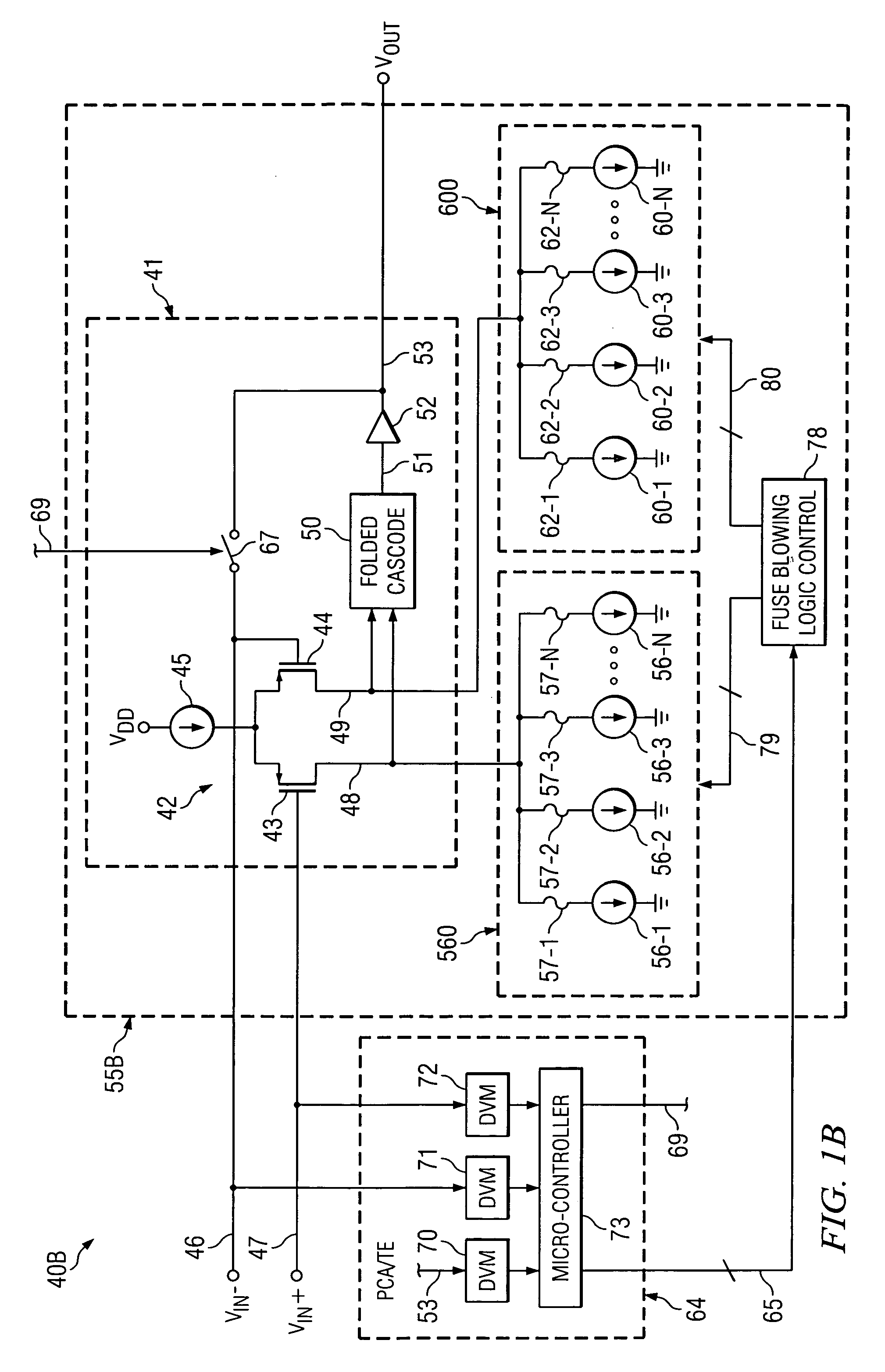Fuse link trim algorithm for minimum residual
a technology of fuse link and residual, applied in the direction of digital storage, instruments, transmission systems, etc., can solve the problems of increasing circuit noise and power consumption, reducing circuit performance, etc., and achieve the effect of reducing thermal drift, power supply drift, circuit noise and/or power consumption of differential input stages
- Summary
- Abstract
- Description
- Claims
- Application Information
AI Technical Summary
Benefits of technology
Problems solved by technology
Method used
Image
Examples
Embodiment Construction
[0021]The method and structure of the present invention are utilized to selectively control blowing of fuses or laser-cutting of links in binarily weighted current sources, in order to trim a circuit parameter, such as an input offset voltage, wherein one trim array is connected to a (+) side of a differential input transistor pair of an integrated circuit chip and the other trim array is connected to a (−) side of the input transistor pair. The trimming is performed according to a trimming algorithm to essentially eliminate the above mentioned residual trim elements and associated residual trim currents so that the only trim elements that remain connected to the differential input transistor pair are those necessary to reduce its offset voltage to an acceptable value. This has the effect of making the differential input transistor stage less susceptible to thermal drift, power supply drift, circuit noise, and / or power consumption.
[0022]Referring to FIG. 1A, a system 40A includes pr...
PUM
 Login to View More
Login to View More Abstract
Description
Claims
Application Information
 Login to View More
Login to View More - R&D
- Intellectual Property
- Life Sciences
- Materials
- Tech Scout
- Unparalleled Data Quality
- Higher Quality Content
- 60% Fewer Hallucinations
Browse by: Latest US Patents, China's latest patents, Technical Efficacy Thesaurus, Application Domain, Technology Topic, Popular Technical Reports.
© 2025 PatSnap. All rights reserved.Legal|Privacy policy|Modern Slavery Act Transparency Statement|Sitemap|About US| Contact US: help@patsnap.com



